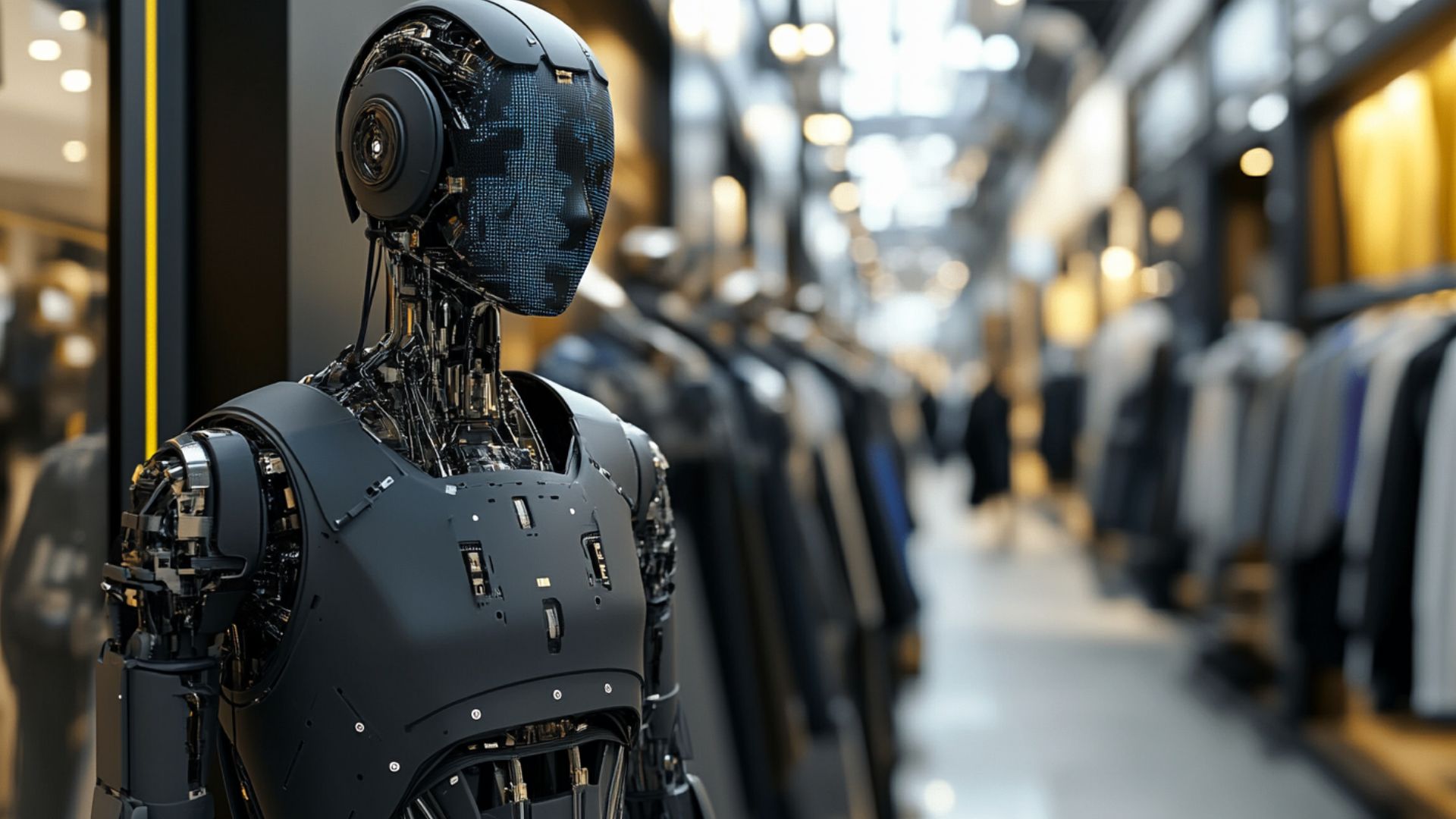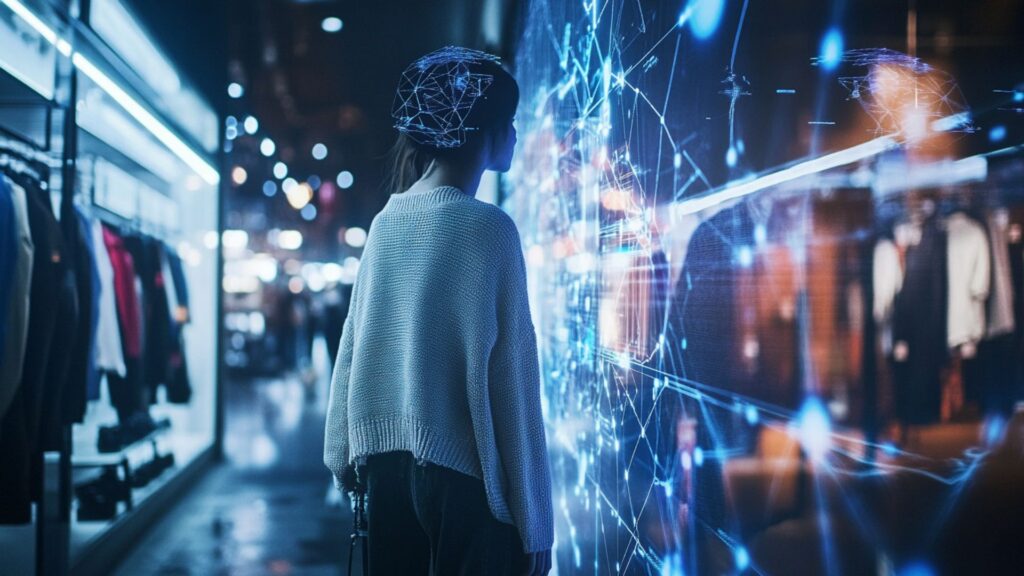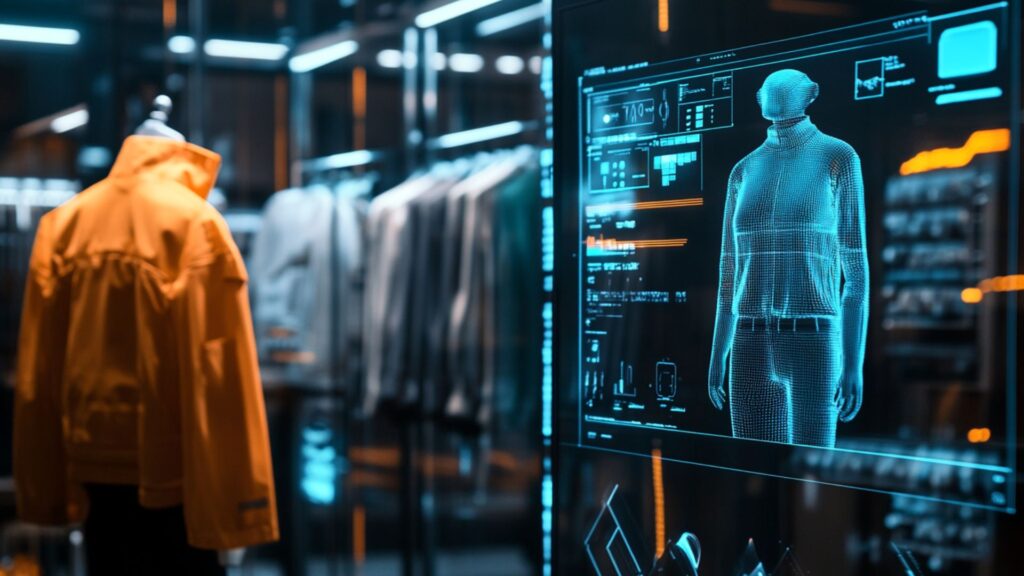AI in Fashion Trend Forecasting: How Technology Predicts the Future of Style

Designers work tirelessly to achieve success through creative approaches, continuous dedication, and gaining new experience. Fashion evolves rapidly, with trends shifting continuously. Technology is used to research emerging trends and track consumer priorities. Technology helps identify new trends and ensures success for many brands.
AI in the fashion industry serves as the driving force for identifying patterns. Through machine learning and data analytics, continuous research is conducted. Systems monitor transitions to new trends and study historical patterns. New colors, styles, and consumer preferences are analyzed.
AI-based systems can study potential buyer preferences and interests. This approach helps designers create compelling collections that attract attention. New technologies are essential for forecasting demand and driving sales success. Fashion is transitioning from traditional human research to automated analysis. AI is crucial for identifying new opportunities in cuts, fabrics, and styles. Brands can remain competitive and achieve success.
Fashion trend forecasting operates with excellent scalability. Many brands can expand their range of appealing products to large audiences. Beyond forecasting, there is comprehensive coverage of social networks and online sales. Systems explore patterns and extract data from social media platforms, which proves extremely valuable.
What Is Fashion Trend Forecasting — and Why Accuracy Matters
Modern trends help brands stand out and select optimal strategies. The concept of forecasting is essential for understanding emerging trends. This process is vital for selecting appropriate styles, colors, and cuts that will become popular. Trend forecasting helps explore new developments in contemporary fashion.
Many companies can anticipate future trends and make strategic decisions. Companies become familiar with premium fabrics that will gain popularity and trending silhouettes. In the ever-changing fashion world, competition is intense. Understanding "how to predict fashion trends?" is essential for securing funding and market insights. Here is key information on this topic:
- Companies analyze various runways and fashion weeks to identify the best designs
- Style research is conducted on influencers and social media platforms
- Economic and cultural contexts of style must be studied today
- Sales data is used to research which items are most popular
- Technology and artificial intelligence serve as driving forces for improved trend knowledge
Traditionally, the approach relies on monitoring social networks and latest imagery. Buyer behavior and reactions to new trends are studied extensively. Researchers can identify optimal strategies and develop compelling content. However, understanding forecast limitations is crucial. An important question is "who benefits from fashion forecasting?" in the fast-paced fashion world.
When forecasts are incorrect, retailers can lose significant amounts of money. This results in producing large quantities of unpopular items that don't sell well. However, understanding who benefits from forecasting and profits significantly is essential. Designers, brands, and retailers are the primary beneficiaries. This enables creating compelling collections, planning product assortments, and developing marketing campaigns. Marketers and consumers also benefit substantially from accurate predictions. Consumers gain access to various trends and can independently research and select new styles.
How AI Is Reshaping the Fashion Forecasting Process
Using AI in fashion represents the optimal approach for researching future trends. Artificial intelligence helps designers stay current and offer the best options. Traditional methods are effective; however, they don't deliver comparable results. In the fast fashion world, artificial intelligence serves as a transformative tool for improving forecasting.
AI provides accuracy, speed, and algorithm improvements when processing vast amounts of data. Artificial intelligence detects patterns and generates reliable data on emerging trends. Here are key fashion technology AI applications:
- Automated Data Collection. Automated data collection occurs across all possible platforms. Artificial intelligence explores information from search engines and social networks. Tools can analyze various online queries, sales data, and blog content. This research is fundamental for designers creating unique concepts. Designers gain comprehensive insights that can transform fashion.
- Image Recognition. AI is essential for pattern recognition, with machine learning revealing recurring design elements. Designers can select optimal colors, materials, and styles that will become fashionable. Machine learning algorithms predict popular new models and emerging fashion markets.
- Real-Time Analytics. AI trend analysis happens in real time. Through analytics, brands receive information as soon as it becomes available. New trends become opportunities from the beginning of research. Designers and companies save considerable time on market trend research through real-time analytics.
AI Tools Powering Trend Forecasting: From Social Media to Sales Data
Tools for fashion trends play important roles in business development. Trend forecasting extends beyond ordinary productivity measures. Fashion shows and social networks serve as excellent indicators for future directions. Expert intuition combined with artificial intelligence plays a crucial role.
Today, machine learning in fashion serves as an essential tool for continuous analysis. Collecting data from social networks at prestigious shows and from everyday consumers is vital. Through machine learning, business strategies are developed to enhance new fashion approaches. Continuous monitoring helps stay updated on trends and appealing styles. Here are primary data sources used by artificial intelligence:
- Instagram. Instagram serves as the premier platform for researching popular posts. Algorithms analyze hashtags and different styles from influential figures. These patterns typically gain tremendous popularity and generate significant benefits.
- TikTok. AI fashion trend research also occurs on platforms like TikTok. Short videos gain tremendous popularity across different countries. AI tracks images and various challenges to identify optimal content and target audiences.
- Online Sales. In online retail, research focuses on which products are most popular. Algorithms study which products are in highest demand and how user behavior changes. This approach helps manage fashion trends effectively and offer optimal selections.
- Runway Collections. Runway collections generate significant views and attention when published on social networks. Artificial intelligence analyzes images to determine appropriate silhouettes and colors. Corresponding reactions help assess trends and make optimal selections.
- Street Style. Fashion data analysis is essential in global street fashion. Various cameras and videos capture appealing styles that are studied by artificial intelligence. Continuous real-time data monitoring helps capture global trends.
Fashion Analytics Solutions: How the Industry Leverages Big Data

Fashion analytics is crucial for continuous research and analysis. Dedicated platforms with analytical capabilities work best for brands. Platforms help track new trends and create unique concepts. Designers can use platforms and access different methods to discover fashion innovations.
Designers create compelling collections according to marketing strategies and inventory considerations. The key aspect of fashion analytics solutions is studying specific platform types. Here is essential information about them:
- Color Analysis Platforms. Color analysis platforms are essential for studying the most popular colors. These platforms help analyze trending seasonal colors and track specific shades.
- Silhouette Tracking Tools. Tools help track silhouettes and styles that are popular. Algorithms analyze different styles and predict which silhouettes will trend. Designers can create appealing garments based on these tools.
- Consumer Demand Analytics. Fashion trend analysis is essential for studying consumer demand. Platforms can examine different sales and returns based on customer interest. Companies can determine whether demand is increasing or decreasing. This process helps regulate appropriate production actively.
- Visual Recognition Tools. Algorithms study different colors, silhouettes, and relevant data from various platforms. Companies can determine the popularity of different fabrics and looks while creating unique concepts.
- Market Sentiment Analysis. Algorithms measure customer reactions to new collections and emerging trends. This process helps assess consumer feelings about unique concepts and create products that generate interest.
Who's Using AI in the Fashion Industry Right Now?
AI in the fashion industry serves as an excellent tool for making informed business decisions. Companies are exploring new platforms and building specific strategies. Implementing AI helps respond to changes and quickly create innovative, unique products. Certain companies frequently use artificial intelligence to achieve maximum success. Here are key companies and their characteristics:
- Zara. Zara uses artificial intelligence and data analytics to track sales performance. The retailer achieves significant profits by rapidly responding to customer preferences and emerging trends.
- H&M. AI in the fashion industry helps H&M with appropriate product distribution. The retailer also uses machine learning for continuous demand forecasting and inventory research. The company can produce different quantities of clothing depending on trends and consumer interests.
- Edited. This analytical platform works optimally for brands. Companies study the fashion market in real time, including popular colors, silhouettes, and trends.
- Heuritech. The company uses advanced computer vision to analyze photographs. This process helps identify new trends before they become mainstream. Consequently, companies can produce appropriate quantities of appealing clothing based on trends.
- Google Trends. AI and the fashion industry combine effectively to help brands with search engine optimization. Companies can collect user data from all regions to predict future trends. Targeted content is developed based on regional preferences.
Predicting Fashion Trends with AI: What the Process Looks Like
Forecasting represents the optimal approach for exploring new trends. Renowned brands can create compelling collections based on forecasts and demand. Forecasting helps improve sales and attract interested consumers. Here are key stages of predicting fashion trends:
- Data Input. Artificial intelligence continuously receives various trends from different platforms. AI studies online sales figures, blogs, and multiple images. Various sources help determine current trends.
- Model Training. Through machine learning algorithms, continuous learning occurs based on historical data. Machine learning helps highlight new factors from popular brands and trends. Brands gain new foundations for recognizing future trends.
- Pattern Detection. Equally important is detecting patterns such as colors, silhouettes, different designs, and materials. Artificial intelligence can analyze this data and select the most popular shades. Brands can create appealing garments in the fashion industry based on pattern detection.
- Forecast Generation. Trend forecasting in fashion is essential for making numerous predictions. Tools can explore growth trends in specific regions. Teams can create clothing according to trends and target demographics.
- Design Application. Design application occurs through extensive data from different platforms. The application helps increase demand for trendy items that are popular. Designers leverage multiple platforms to develop compelling collections.
- Inventory Management and Marketing. Artificial intelligence helps manage inventory properly and control costs effectively. Marketing also improves customer attention and interest in trendy items.
The Benefits of AI Trend Analysis for Designers, Brands, and Retailers

Facing constant change, understanding "how to predict trends?" and offering optimal solutions is essential. Artificial intelligence has improved forecasting and opened new opportunities. This process involves designers, manufacturers, and brands for continuous development. Appropriate strategies help improve businesses and increase efficiency. Using quality tools has a significant impact on attracting attention and creating unique concepts.
Here is a detailed description of benefits for different roles:
- Designers - Concept Validation. Artificial intelligence helps validate ideas before development begins. Using analytics allows designers to create authentic fashion appeal. Designers adapt creativity to trending preferences. Trend forecasting in fashion includes reducing risks of creating unnecessary items. Designers can maintain balance between demand and production quantities.
- Brands - Faster Time to Market. Accelerated market entry for appealing clothing, shoes, and accessories is essential. Brands use artificial intelligence to reduce time between trend identification and market entry. This process helps brands conduct appropriate data collection and real-time analysis. Using forecasting helps react quickly and create products needed for market trends. This process is unique for maintaining brand reputation and entering target markets.
- Manufacturers - Efficient Production Planning: AI trend analysis enables manufacturers to optimize production schedules and resource allocation. By predicting which styles and quantities will be in demand, manufacturers can adjust their production lines accordingly. This reduces waste, minimizes overproduction, and ensures efficient use of materials and labor. Manufacturers can also coordinate better with suppliers to secure necessary fabrics and components in advance.
- Retailers - Optimized Stock and Pricing. Optimized inventory and pricing are significant for companies. Fashion trend forecasting helps optimize stock and pricing quickly. Artificial intelligence can accurately forecast and predict latest trends. Through AI, companies produce fewer unfashionable products that aren't trending. Companies adopt appropriate pricing strategies depending on demand.
- Marketing Teams - Targeted Campaign Development: Marketing professionals benefit from AI insights to create more effective promotional campaigns. Understanding emerging trends allows marketers to develop content that resonates with target audiences before competitors. AI helps identify which trends will appeal to specific demographics and geographic regions. This enables more precise advertising spend and higher conversion rates through trend-aligned messaging.
Limitations of AI in Fashion Forecasting: Where Human Creativity Still Wins
Artificial intelligence serves as an excellent tool in fashion for improving forecasting. However, certain limitations can question AI usage effectiveness. Combined with human expertise and empathy, much more can be achieved. Human creativity, approach, and taste play essential roles in creating truly unique concepts.
AI trend analysis helps companies build appropriate strategies and achieve success. However, certain significant limitations are important to assess:
- Emotional Nuances. Artificial intelligence effectively identifies trends and can recommend optimal choices. However, emotional connections between clients and specific fashion industry products are missing. AI can't predict potential connections that should exist in fashion.
- Cultural Nuances. Artificial intelligence explores cultural nuances well but can make mistakes. The biggest AI mistakes in the fashion industry involve missing important elements. Symbolism, traditions, and cultural features may not be considered and properly understood.
- Creative Nuances. Systems learn from past interactions and continuous data points. Systems can offer unique concepts; however, without future vision. Human intelligence and creativity can create wonderful, impactful, and exciting products for customers.
What's Next? The Future of Trend Forecasting with AI and Machine Learning
Future AI usage in fashion promises new predictions and trend improvements. Fashion and technology are merging to offer excellent combinations. Good synergy between artificial intelligence and humans can not only predict trends but also adapt them to consumers. Here are main fashion development directions with technology:
- Hyper-Personalized Trends. Algorithms can analyze customer preferences on individual bases. This process helps create personalized collections that interest specific demographics. Consumers receive what they need and value the brand accordingly.
- AR/VR Integration. Using machine learning in fashion helps explore historical information. Excellent integration helps users select trends before production begins. Brands can test different collections in virtual environments. This process is interesting and helps create truly unique concepts that engage people.
- Real-Time Consumer Testing. AI-based systems collect necessary data in real time. Feedback is gathered, and indicators on colors, silhouettes, and different prints are collected. Companies can use this data and adjust product creation accordingly for interested customers.
- Predictive Design. Trend AI is used together with machine learning capabilities. Systems can predict future trends during development stages before they appear. Historical data and relationships between customers and specific fashion trends are combined. Companies can create collections based on this data and obtain necessary information.
AI is revolutionizing the fashion world through its comprehensive approach. Today, the collaboration between human expertise and artificial intelligence creativity is essential. Artificial intelligence can study various market trends and offer optimal solutions. Beyond forecasting, AI knows in advance which silhouettes and colors will trend. Human expertise helps improve creative approaches and knowledge of symbolism and tradition. Together, humans and artificial intelligence will achieve significant success in fashion.


